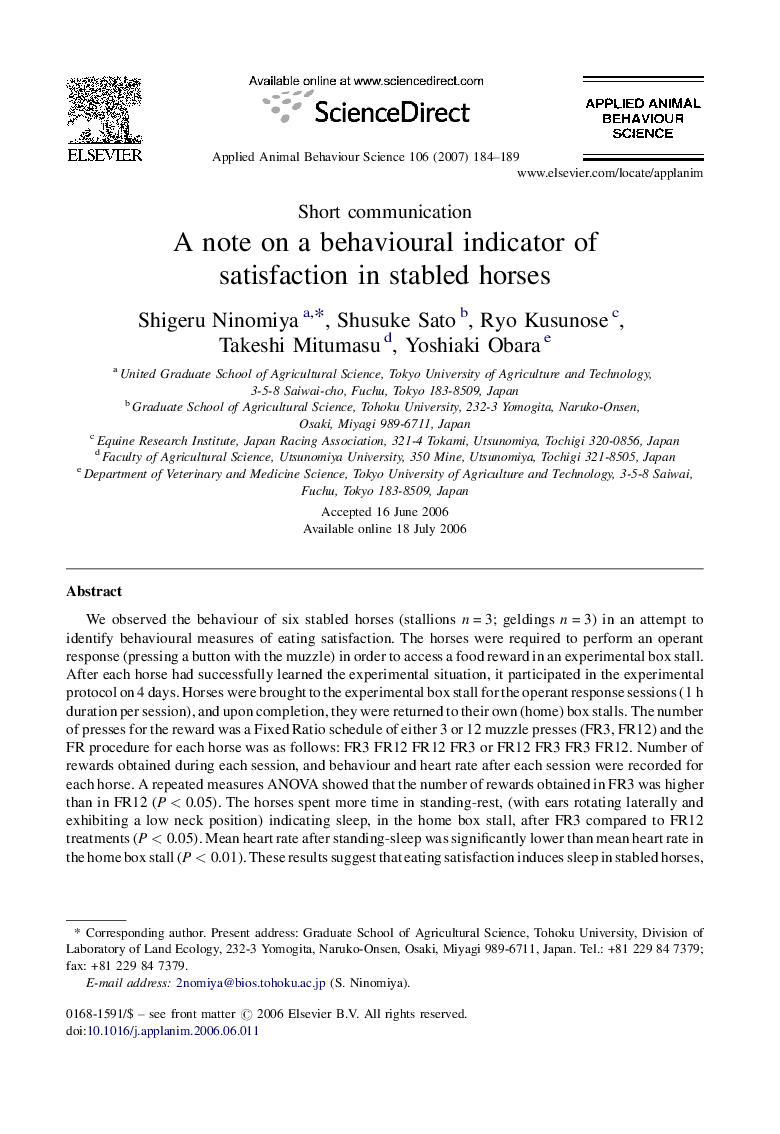| Article ID | Journal | Published Year | Pages | File Type |
|---|---|---|---|---|
| 4524173 | Applied Animal Behaviour Science | 2007 | 6 Pages |
We observed the behaviour of six stabled horses (stallions n = 3; geldings n = 3) in an attempt to identify behavioural measures of eating satisfaction. The horses were required to perform an operant response (pressing a button with the muzzle) in order to access a food reward in an experimental box stall. After each horse had successfully learned the experimental situation, it participated in the experimental protocol on 4 days. Horses were brought to the experimental box stall for the operant response sessions (1 h duration per session), and upon completion, they were returned to their own (home) box stalls. The number of presses for the reward was a Fixed Ratio schedule of either 3 or 12 muzzle presses (FR3, FR12) and the FR procedure for each horse was as follows: FR3 FR12 FR12 FR3 or FR12 FR3 FR3 FR12. Number of rewards obtained during each session, and behaviour and heart rate after each session were recorded for each horse. A repeated measures ANOVA showed that the number of rewards obtained in FR3 was higher than in FR12 (P < 0.05). The horses spent more time in standing-rest, (with ears rotating laterally and exhibiting a low neck position) indicating sleep, in the home box stall, after FR3 compared to FR12 treatments (P < 0.05). Mean heart rate after standing-sleep was significantly lower than mean heart rate in the home box stall (P < 0.01). These results suggest that eating satisfaction induces sleep in stabled horses, and that episodes of standing-sleep behaviour may be a useful indicator of appropriate or enhanced welfare in the horse.
